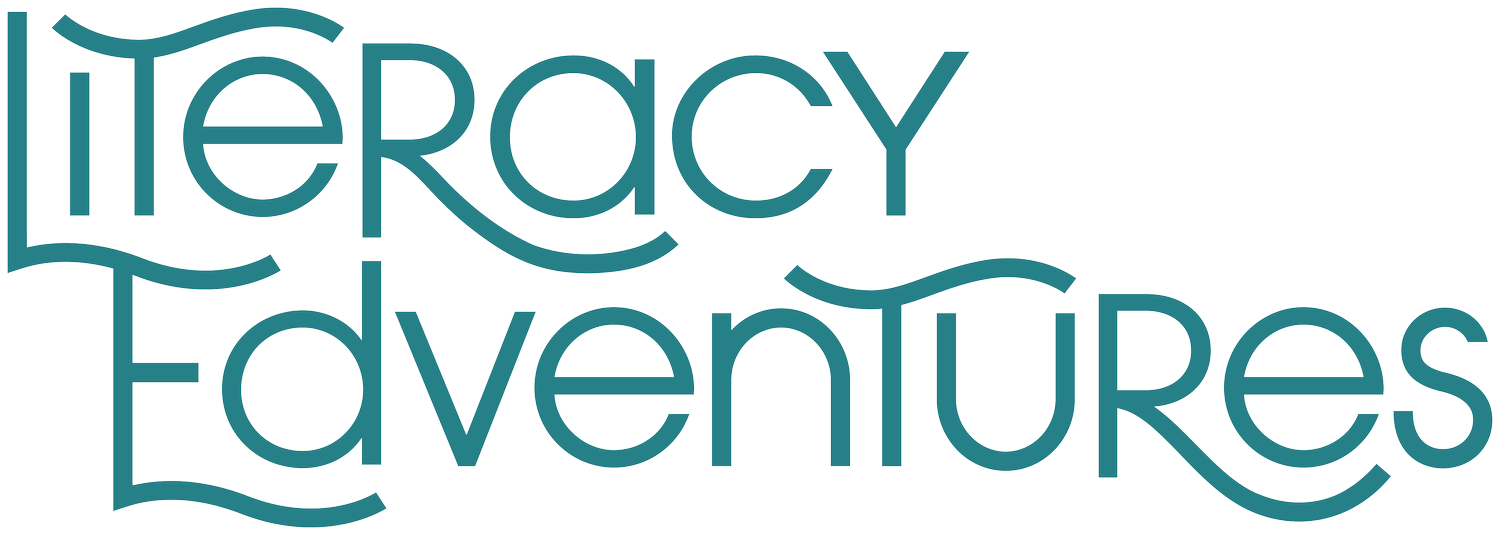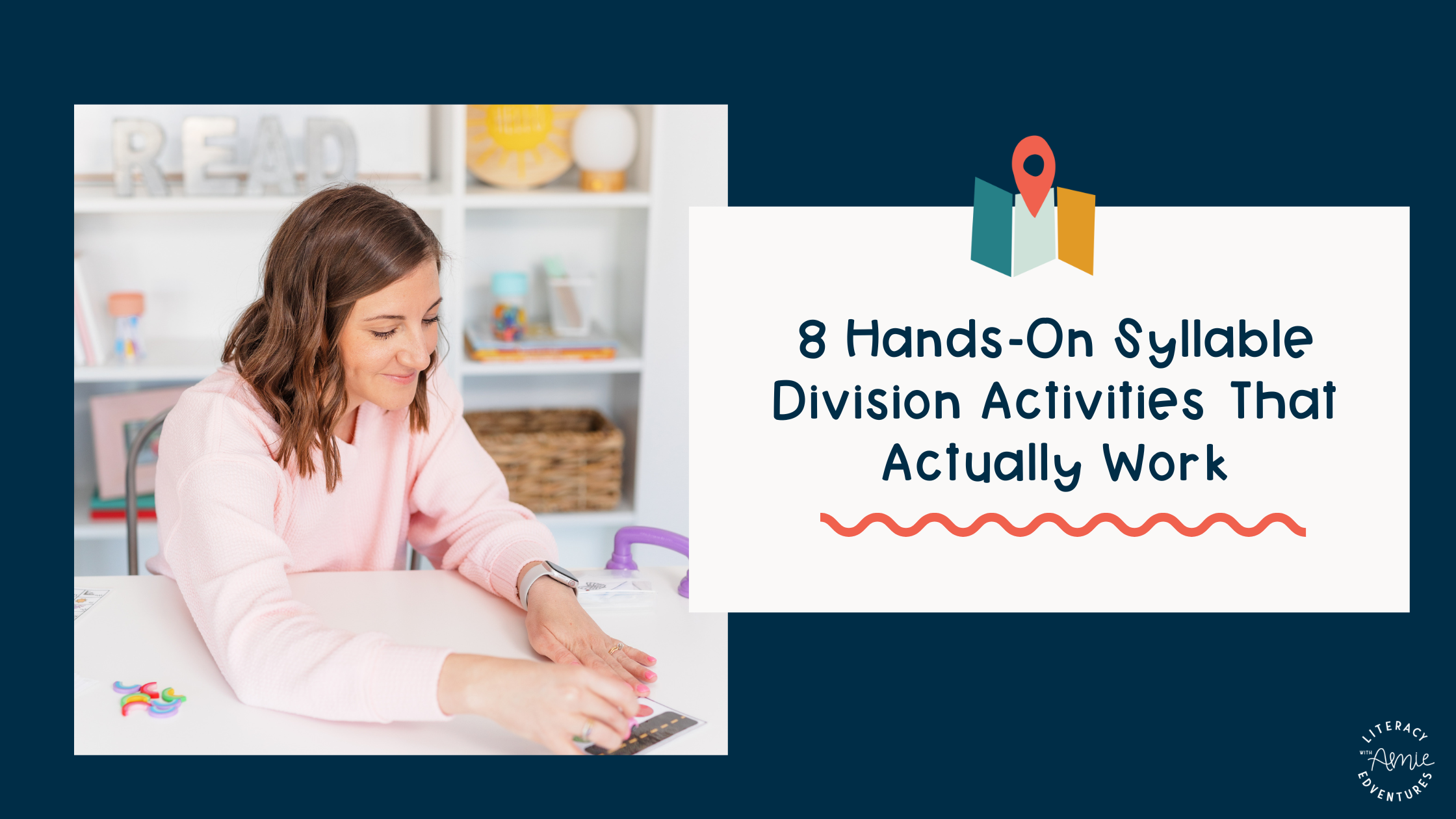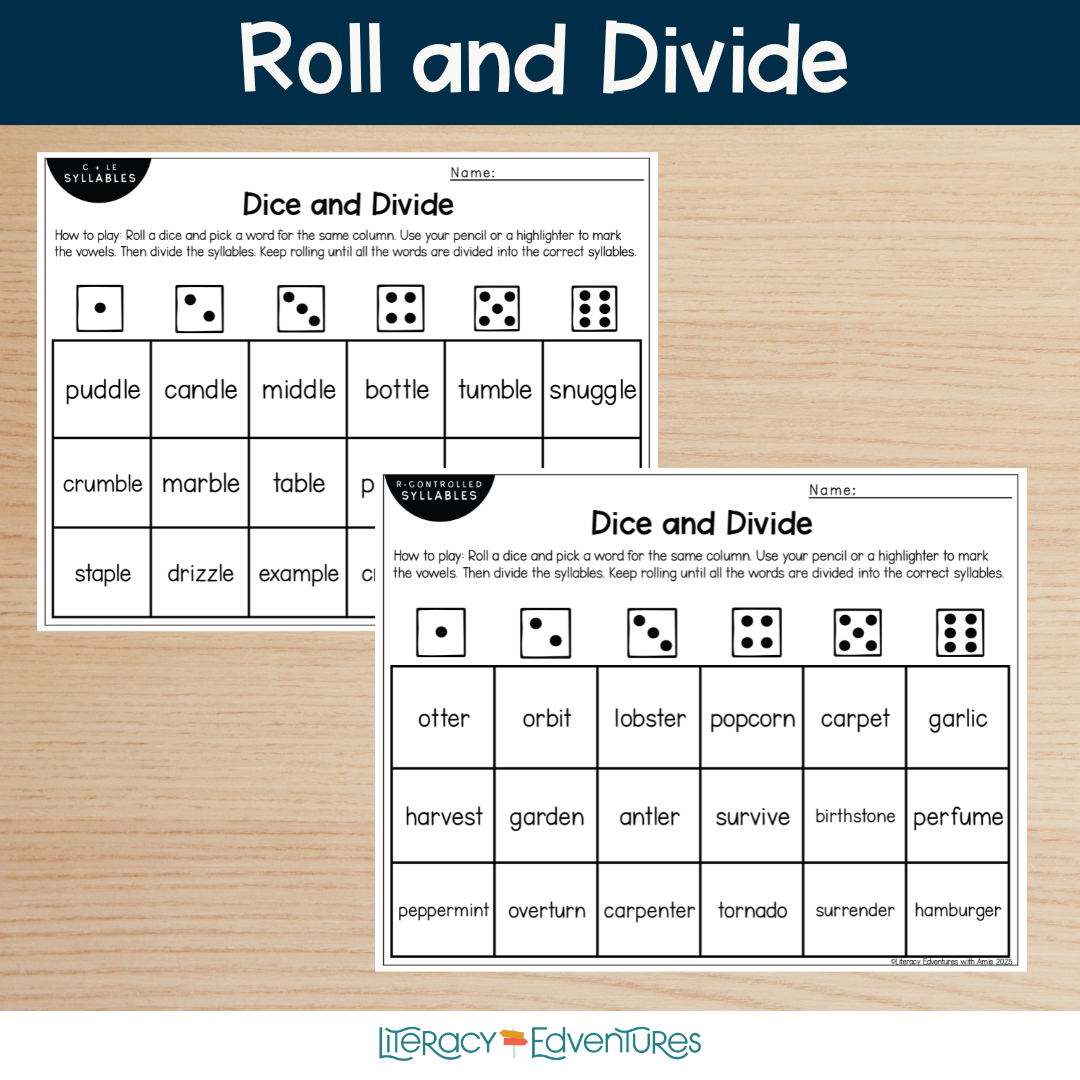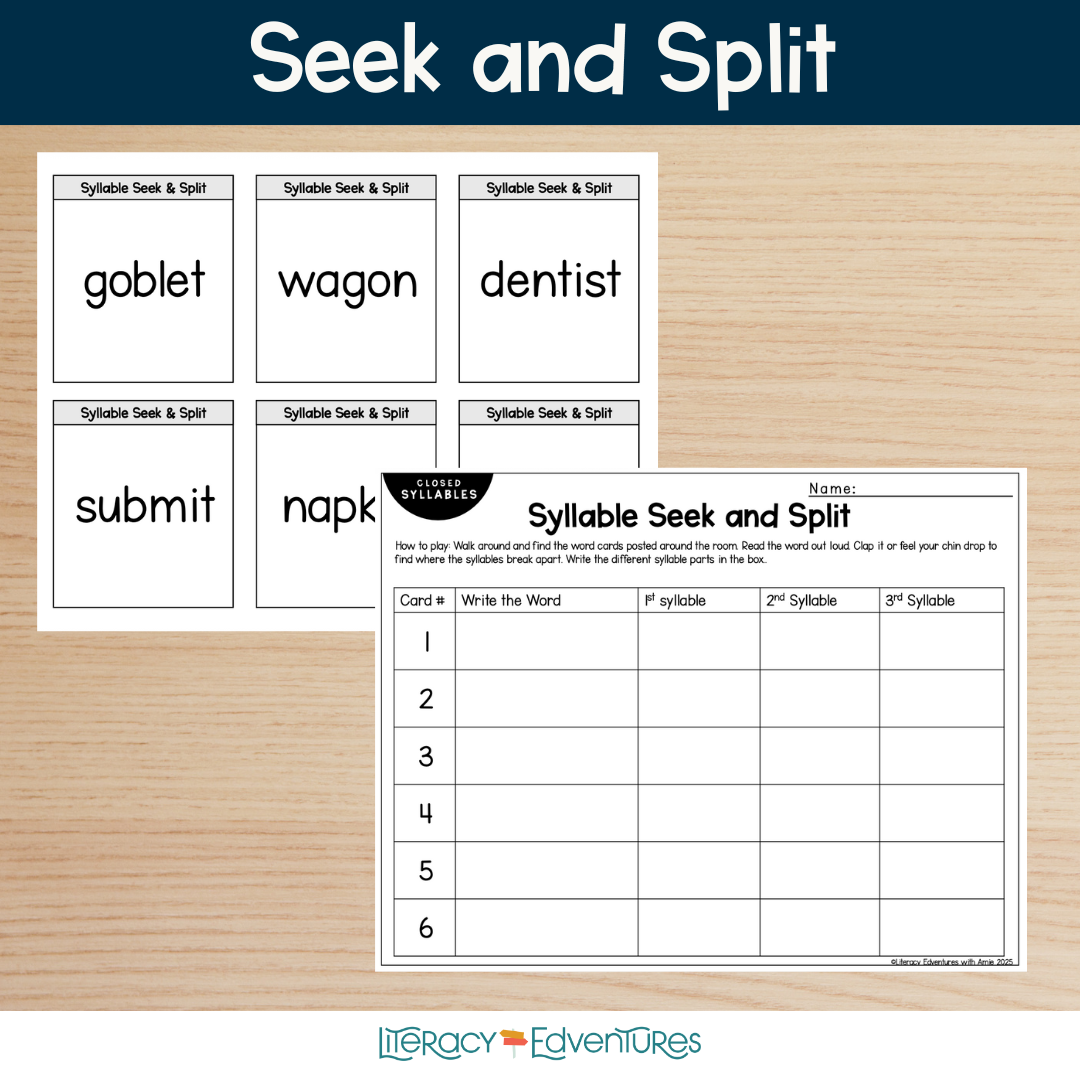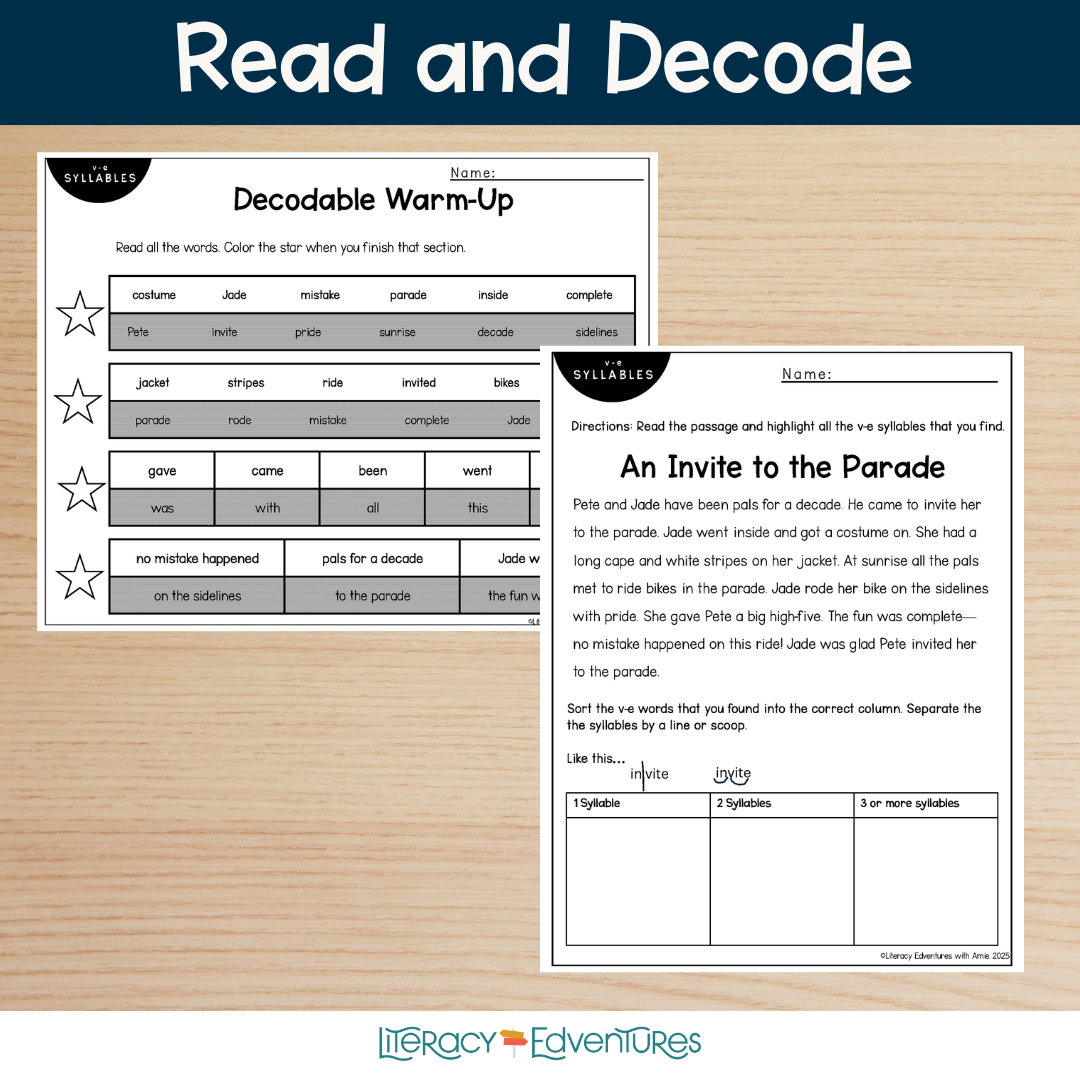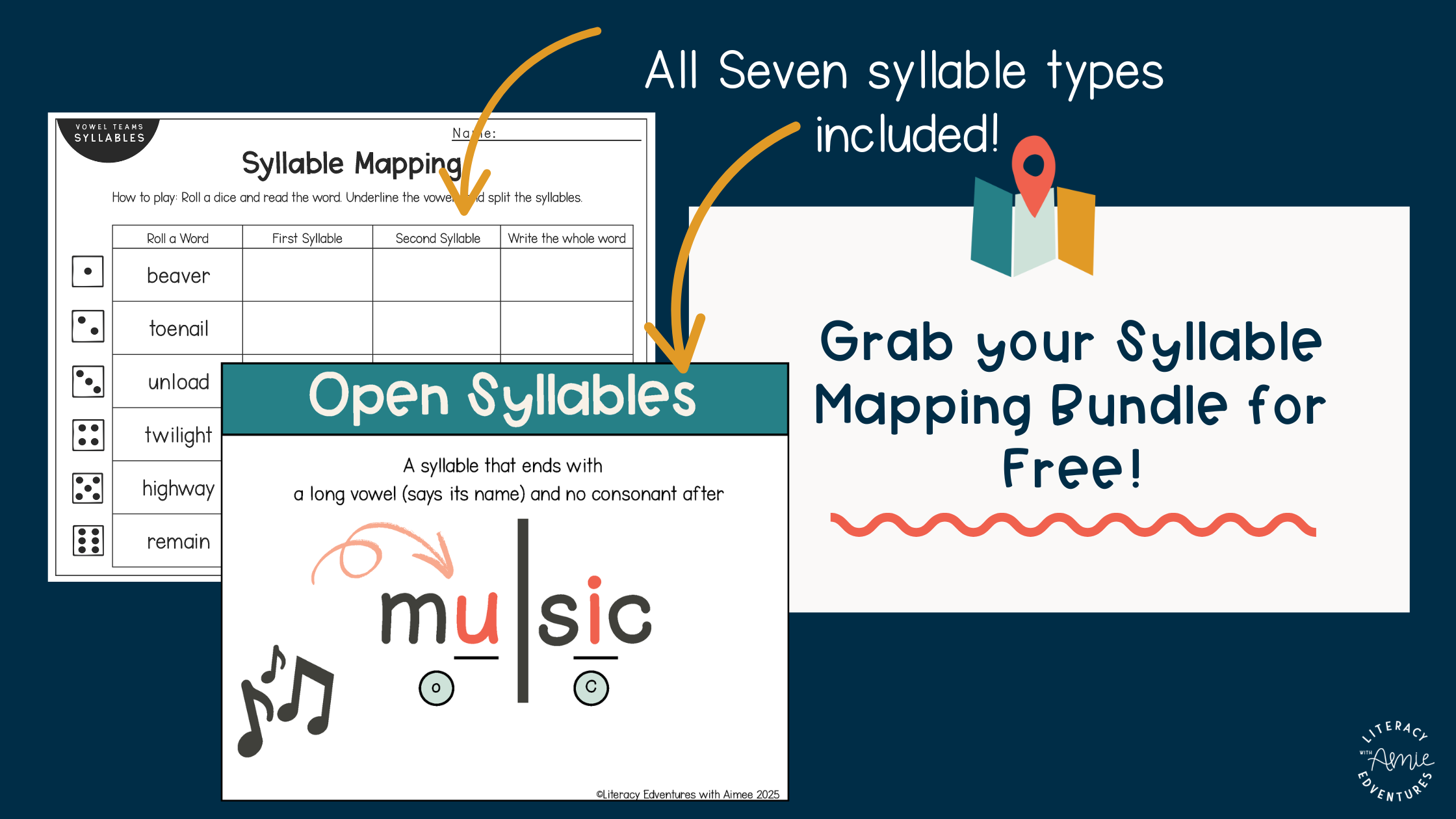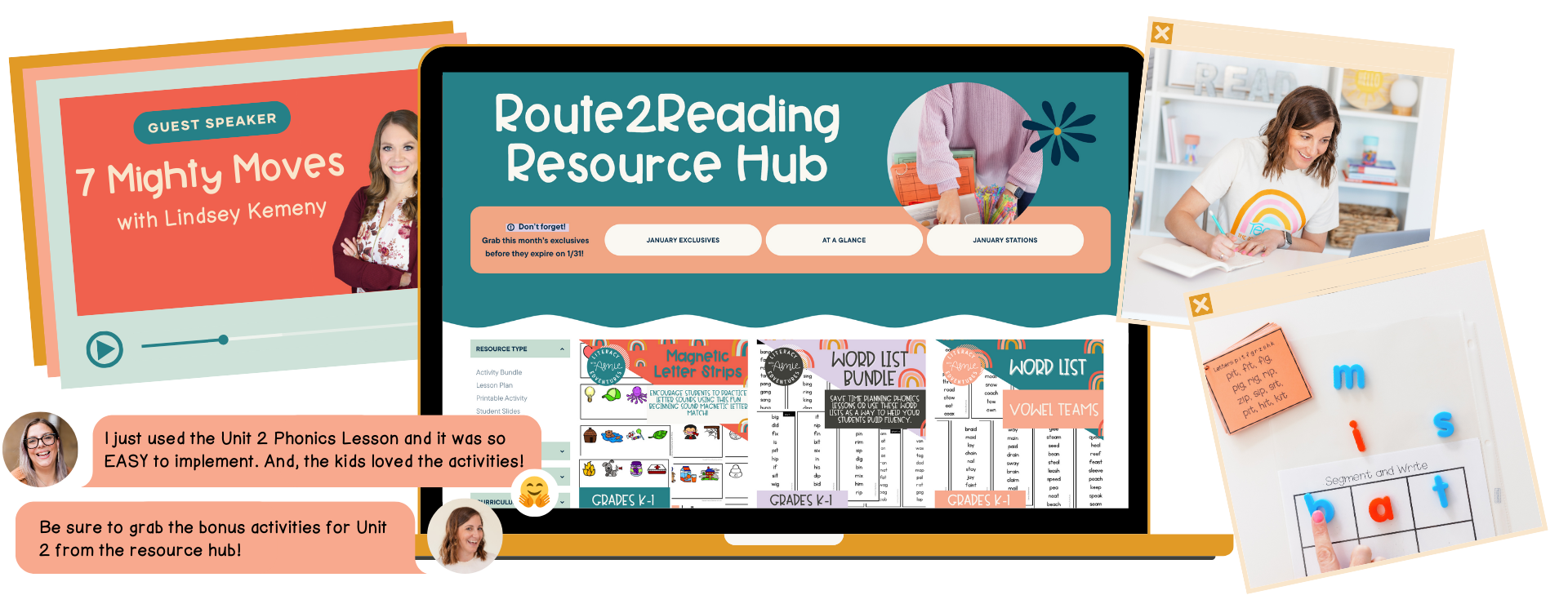8 Hands-On Syllable Division Activities That Actually Work
Welcome back to our syllable series! 👋
In Part 1, we tackled the “what”: the six syllable types and why they matter. Now it’s time for the fun part — the “how.”
This is where syllable instruction goes from abstract (underline the vowels, draw the lines) to alive and meaningful. With the right activities, students don’t just memorize steps — they use them. They play, laugh, and apply their new strategies to real reading and writing.
Why Activities Matter
Let’s be honest: telling kids to “divide and label syllables” without context is about as exciting as watching paint dry. The magic happens when we layer in hands-on practice, games, and connected text. That’s when kids start to own the strategy and transfer it to real reading.
Think of it this way: the more playful and varied the practice, the more confident your students will be when they bump into those big words during independent reading and writing.
👉 Research shows that explicit syllable instruction helps students tackle multisyllabic words more efficiently (Kearns, 2020). Games and partner routines also increase motivation and transfer (Foorman et al., 2016)
Roll and Divide
What it is:
A partner game where students roll dice, select words, and practice dividing and reading them.
Set-Up:
Print a word list or game board.
Provide dice, highlighters, and pencils.
Pair students for partner coaching.
How to Play:
Roll the dice.
Choose a word from that column.
Underline vowels, divide, label syllables, and read.
Partner A divides while Partner B checks. Switch roles.
Teacher Tip: Use different-colored highlighters for each partner to make accountability visible.
Syllable Seek & Split: Word Hunt
What it is:
A “find and write” activity that gets students moving.
Set-Up:
Tape word cards around the room or stack them in a pile.
Give students clipboards with “Seek & Split” sheets.
How to Play:
Students find a word card.
Clap or check chin drops to count syllables.
Write each syllable in its own box.
Teacher Tip: Make it a literacy station. Swap cards weekly, or laminate them so students can mark and erase.
Syllable Splat!
What it is:
A fast-paced card game with a surprise element.
Set-Up:
Print sentences that include multisyllabic words.
Mix in “SPLAT!” cards.
How to Play:
Flip a card and read the sentence.
If it’s “SPLAT,” the card goes to the bottom.
Teacher Tip: Add new syllable types as you teach them. Laminate for durability (and giggles).
Build-A-Word: Word Construction with Tiles
What it is:
Students use tiles or syllable cards to build words piece by piece.
Set-Up:
Provide letter tiles or pre-cut syllable cards (e.g., pic, nic, sun, set).
How to Play:
Build the word.
Clap the syllables.
Blend and read smoothly.
Teacher Tip: Color-code syllable types (blue = closed, yellow = open, etc.) for extra support.
Decodable Warm-Up: Word & Sentence Practice
What it is:
A structured warm-up where students practice open-syllable words and short decodable sentences before moving into longer text.
Set-Up:
Provide a word list or sentence strip page.
Have students use highlighters, pencils, or markers to spot open syllables.
How to Play:
Students read through the list of open-syllable words (e.g., robot, music, bonus, focus).
As they read, they underline vowels and scoop syllables.
Move into short decodable sentences, clapping syllables and rereading for fluency.
Teacher Tip: This routine makes a great daily warm-up. Repeated exposure helps students see syllable patterns automatically, so they’re primed for success in longer passages.
Highlight & Read: Syllables in Text
What it is:
Students apply syllable strategies in decodable passages.
Set-Up:
Choose decodable texts featuring target syllable types.
Provide highlighters.
How to Play:
Read once for meaning.
Highlight target syllables.
Reread smoothly.
Teacher Tip: End with echo reading or partner fluency for extra confidence.
Partner Coaching: Students as Teachers
What it is:
Students explain their thinking while dividing words, then coach one another.
Set-Up:
Provide a list of multisyllabic words.
Teach coaching sentence starters.
How to Play:
Partner A divides and explains.
Partner B checks and asks, “Why did you split it there?”
Switch roles.
Coaching Starters for Dividers:
“I divided here because I saw a ____ syllable.”
“I checked by reading it like this: ____.”
Coach Prompts:
“What syllable type did you notice?”
“Could there be another way to divide it?”
Positive Feedback Prompts:
“Nice! You spotted the ____ syllable right away.”
“That makes the word easier to read!”
Teacher Tip: Model how to give feedback first. Explicit teaching builds positive peer interactions.
Dictation with Syllable Scoops
What it is:
A bridge between decoding and spelling.
How to Play:
Say a word aloud (e.g., basket).
Students write it with scoops: bas/ket.
Dictate a sentence: Meg had a basket at the picnic.
Teacher Tip: This is gold for transferring syllable division into writing.
Wrapping It Up
When we move syllable instruction beyond worksheets, kids don’t just memorize syllable types — they use them. These routines (Dice & Divide, Seek & Split, Syllable Splat, Build-A-Word, and more) give students repetition without boredom.
👉 Missed Part 1? Start here.
👉 Want ready-to-go resources? Check out my Syllable Instruction Bundle — complete with word lists, passages, and games that align with these activities, plus a decoding guide for each syllable type.
Wish you had a literacy coach and resources in your back pocket?
I understand that buying each resource separately can quickly ADD UP. As a teacher, I know we have to make the money we spend COUNT! But don’t worry—there’s a more straightforward, more efficient solution with Route2Reading, my K-2 membership designed to streamline planning, prepping, and teaching small group instruction. Rather than spending your weekends glued to your computer, searching for Science of Reading-aligned phonemic awareness, phonics lessons, and decodable texts for your small groups, you can log in to Route2Reading. Choose the focus skill for the week, download the detailed, step-by-step lesson plans and activities, and your small group instruction is ready to go in just a few clicks. Planning has never been easier!
I hope that you found today’s post helpful. Whether you choose to join the membership or not, I am always here to help you in any way that I can. Leave your questions below or send me an email Amie@literacyedventures.com

